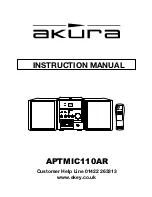
This quick start guide is designed to help you with some of the common operations that
you will need to perform with the DM-24.
There are some common sense precautions which you should note before starting to work
with the DM-24.
• Keep the DM-24 on a firm, level surface. Make sure there is enough space at the rear
for cable connections, and for ventilation.
• Avoid very hot, very cold or very humid locations for the DM-24.
• Avoid eating or drinking over the DM-24—in common with all precision electronic
equipment, the DM-24 does not work well with spilled liquid or crumbs inside the
case!
• If possible, make the area where you work with the DM-24 into a smoke-free zone.
Smoke and dust are enemies of precision electronic devices.
• When you turn on the DM-24, the faders move several times to calibrate themselves
before returning to the position when the DM-24 was last turned off. This is per-
fectly normal, but you should make sure that there is nothing on the top surface of
the DM-24 which will stop the faders moving, otherwise the calibration process may
be inaccurate.
• When the DM-24 is in operation, do not cover the top surface, and make sure that the
heat sink at the rear of the unit is clear.
• Always use recommended cables and connectors with the DM-24, especially when
making digital audio connections.
• Always make connections to and from the DM-24 with the power turned off to all
units. This avoids possible damage to components, as well as avoiding “thumps”,
etc. through the monitoring system.
• If anything appears to be wrong with the DM-24:
• If an error message appears, make a note of it, as well as what you were doing
immediately prior to the problem occurring.
• Read the manual. It may well contain something which is relevant to the problem
you have encountered.
• If you have Internet access, visit the TASCAM Web site for the latest product
news, etc.
• Do not attempt to repair the DM-24 yourself. Arrange for it to be examined and
repaired by TASCAM-authorized service personnel.
Before you get going
Naturally, it cannot pretend to be a comprehensive guide to all the facilities provided on
this console, but we hope that it will serve its purpose in getting you started with the
DM-24 and give you some idea of the capabilities of the unit.
2
DM-24 Quick Start Guide


































